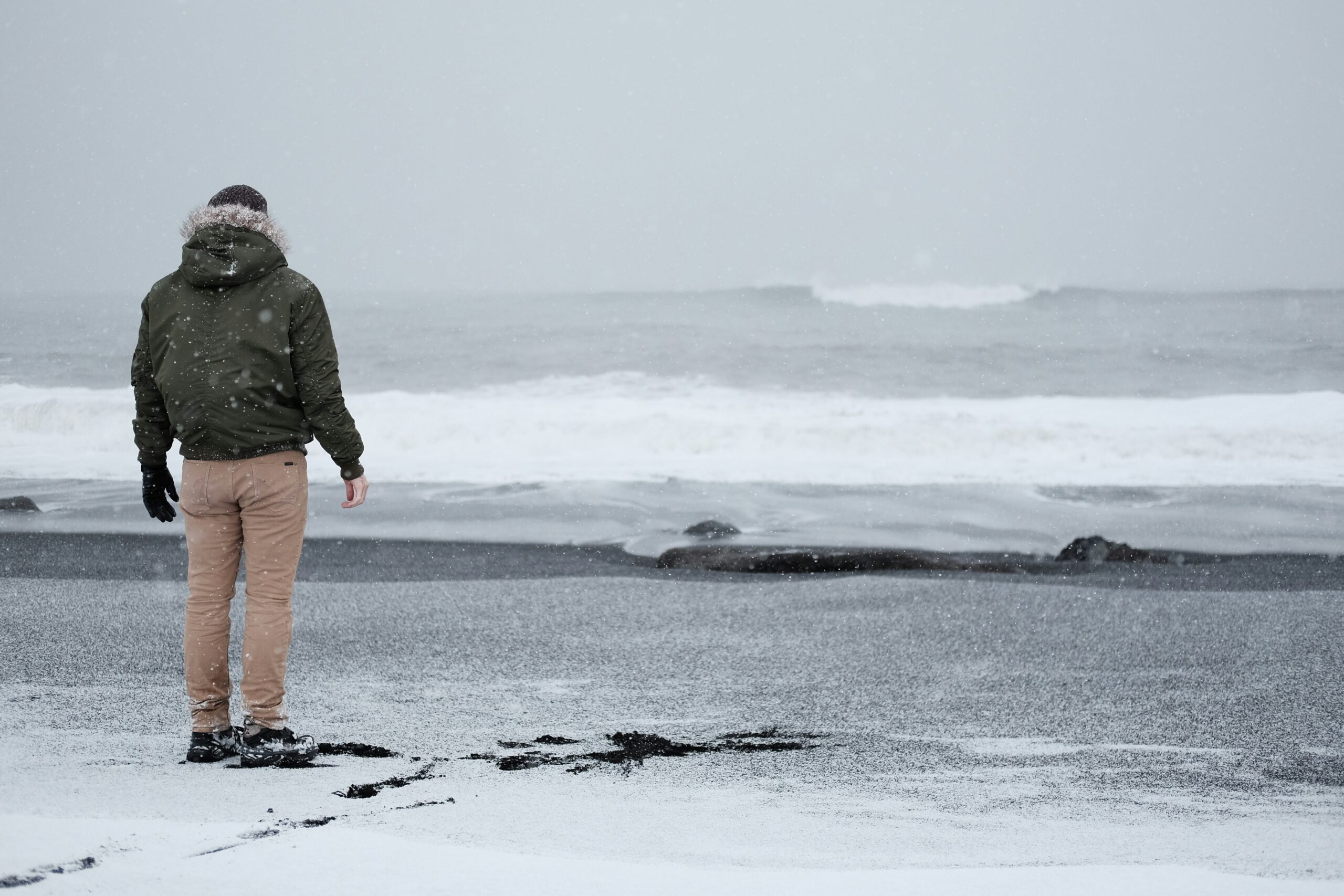If you’re an avid outdoor enthusiast who loves camouflage gear, you know how essential it is to take care of your treasured collection. But when it comes to storing your camouflage outdoor gear, you might find yourself pondering over the best practices. Fret not, as this article will provide you with the valuable tips and tricks you need to ensure your gear remains in top-notch condition for all your future adventures. From organizing your gear to protecting it from environmental factors, you’ll learn everything you need to know to properly store your camouflage outdoor gear. So let’s get started, shall we?

Understanding the Importance of Proper Storage
Proper storage of camouflage gear is crucial to maintaining its effectiveness and longevity. Improper storage can lead to damage and deterioration, rendering the gear less effective in camouflaging you and ultimately impacting your outdoor activities. By understanding the effect of improper storage on camouflage gear and the materials used to make outdoor gear, as well as the reasons to manage and maintain your gear, you can ensure that your investments are well cared for and ready for use whenever you need them.
The effect of improper storage on camouflage gear
Improper storage of camouflage gear can have detrimental effects. Exposure to moisture, extreme temperatures, and sunlight can cause fading, discoloration, and deterioration of the fabric and patterns. Additionally, storing gear in cramped or untidy spaces can lead to creasing, tearing, and damage to zippers, snaps, and other fasteners. Therefore, it is essential to adopt proper storage techniques to minimize these risks and preserve the effectiveness of your camouflage gear.
Understanding the material of outdoor gear
Before delving into the specifics of proper storage techniques, it is important to have a basic understanding of the materials used in outdoor gear. Camouflage gear is typically made from synthetic fabrics like nylon or polyester, which are designed to be lightweight, durable, and resistant to moisture. Understanding the properties of these materials can help you determine the best cleaning and storage practices to maintain their quality and performance.
Why manage and maintain your gear
Managing and maintaining your camouflage gear is vital for several reasons. Firstly, it ensures that your gear remains in optimal condition and retains its effectiveness when you need it most. By taking care of your gear, you can avoid unexpected failures or malfunctions when out in the wilderness. Additionally, proper storage and maintenance can extend the lifespan of your gear, saving you money in the long run. Lastly, keeping your gear clean and well-stored demonstrates respect for your equipment, and in turn, the environment you explore, fostering a responsible and sustainable approach to outdoor activities.
Cleaning Camouflage Outdoor Gear before Storage
Properly cleaning your camouflage gear before storing it is an essential step in maintaining its quality and performance. Here are some guidelines to ensure that you clean your gear correctly:
The right way to clean your gear
Begin by reading the manufacturer’s instructions for cleaning your specific gear. In general, camouflage outdoor gear can often be machine-washed on a gentle cycle with a mild detergent, but it is important to follow any specific guidelines provided. Inside-out washing can help preserve the fabric’s camouflage pattern. Hand washing is also an option for delicate items or when machine-washing is not recommended.
Products to use for cleaning
When selecting a detergent for cleaning your camouflage gear, opt for a mild, non-fragrant one that is free of bleach or fabric softeners. These harsh chemicals can damage the fabric and affect its camouflage effectiveness. It is best to choose products specifically designed for outdoor gear, as these are formulated to clean effectively without causing harm to the fabric.
Drying camouflage outdoor gear correctly
After cleaning your camouflage gear, it is crucial to dry it properly to prevent the growth of mold and mildew. Avoid using a dryer, as the heat can damage the fabric or cause it to shrink. Instead, air-drying is recommended. Hang your gear on a clothesline or lay it flat on a clean surface, away from direct sunlight or heat sources. Ensure that it is completely dry before storing it to prevent moisture-related issues.
Proper Storage Techniques for Camouflage Clothing
Properly storing your camouflage clothing is essential to keep it in top condition for your outdoor adventures. Follow these steps to ensure your clothing stays in optimal shape:
Ensuring clothes are thoroughly dry
Before storing your camouflage clothing, ensure that it is completely dry. Even the slightest dampness can lead to mold and mildew growth, causing damage to the fabric. Give your clothing ample time to air dry after washing before moving on to the next step of storage.
Folding or rolling for storage
When it comes to storing camouflage clothing, you have two main options: folding or rolling. Both methods have their advantages, so choose the one that suits you best. Folding allows for easier identification and retrieval of specific items, while rolling minimizes creasing and saves space. Whatever method you choose, make sure to fold or roll your clothing neatly to avoid unnecessary wrinkles or damage.
Avoiding moth and insect damage
One common concern when storing clothes, especially those made of natural fibers, is moth and insect damage. To protect your camouflage clothing from these pests, make use of mothballs or natural alternatives, such as lavender sachets or cedar chips. These deterrents can be placed in the storage area or in sealed containers alongside the clothing. Regularly inspect your stored clothing for signs of infestation and take appropriate action if necessary.
Storing Camouflage Footwear
Properly storing your camouflage footwear is crucial to maintaining its shape and performance. Follow these steps to ensure your footwear remains in top condition:
Cleaning and drying footwear
Before storing your camouflage footwear, it is important to clean them thoroughly to remove dirt, mud, and other debris. Using a soft brush, gently scrub the exterior of the shoes to remove any dirt or stains. For tougher stains, you may need to use a mild detergent or a specialized shoe cleaner. Rinse off any cleaning agents and allow the footwear to dry completely before moving on to the next step of storage.
Using shoe trees for shape maintenance
To help maintain the shape of your footwear during storage, consider using shoe trees or stuffing them with newspaper. This prevents the shoes from becoming misshapen or losing their form, especially with softer materials like leather or fabric. Additionally, shoe trees can absorb any excess moisture, helping to prevent the growth of mold and mildew.
Storing in a dry, cool place
To ensure the longevity of your footwear, store them in a dry and cool place, away from direct sunlight or heat sources, which can cause the material to warp or degrade. Avoid storing them in a humid environment, as this can promote the growth of mold and mildew. Ideally, choose a well-ventilated area or invest in a shoe rack or storage containers that allow for proper airflow.

The Right Way to Store Gear like Backpacks and Vests
Properly storing gear like backpacks and vests is crucial to keep them in optimal condition for your outdoor activities. Follow these steps to ensure your gear stays ready for use:
Emptying all pockets
Before storing backpacks, vests, or any other gear with multiple pockets, ensure all the pockets are emptied. Check for any forgotten items, such as snacks or small tools, as they can attract pests or cause damage to the gear if left inside for an extended period. Shake out any debris or dirt and wipe the pockets clean before proceeding with the storage process.
Cleaning with the suitable products
Cleaning gear like backpacks and vests can vary depending on the material and construction. Generally, wiping down the surface with a damp cloth or using a mild soap and water solution should suffice for most cleaning needs. For tougher stains or more delicate materials, refer to the manufacturer’s guidelines or seek professional cleaning services, if necessary. Ensure that the gear is completely dry before moving on to the next step of storage.
Conditions for optimal storage
When it comes to storing backpacks and vests, aim for a clean and dry environment. Avoid storing them in areas prone to temperature extremes, excessive moisture, or direct sunlight. If possible, hang the gear or store it flat to prevent unnecessary creasing or deformation. Additionally, consider using storage containers or protective covers to shield the gear from dust, pests, and potential damage.
Storing Camouflage Hunting Equipment
Properly storing your camouflage hunting equipment is crucial to preserve its functionality and safety. Follow these tips to ensure your hunting equipment remains in top condition:
Caring for hunting rifles
When storing hunting rifles, it is essential to clean and oil them prior to storage to prevent rust and corrosion. Use a gun cleaning kit and follow the manufacturer’s instructions for disassembling and cleaning each part. Apply a light coat of gun oil to the metal surfaces to protect them from moisture. Store the rifles in a locked and secure cabinet or safe, away from children and unauthorized access.
Storage tips for bows and arrows
To store your bows and arrows, ensure that they are clean and free from dirt or debris that could impact their performance. Store them in a secure case or rack specifically designed for archery equipment to prevent damage or warping. Consider using silicone-treated or specialized cases for added protection against moisture and humidity. Avoid storing bows under tension, as this can affect their overall strength and performance.
Maintaining hunting knives for storage
Before storing hunting knives, clean them thoroughly to remove any dirt, blood, or residue. Dry them completely to prevent rust and apply a thin coat of oil to the blades to protect against corrosion. Sheath the knives or store them in a specially designed knife roll or case to prevent accidental cuts or damage. Place the stored knives in a secure and dry location, away from children or anyone who is not trained in handling sharp objects.

Climate Considerations for Storage
The climate in which you store your camouflage gear can significantly impact its longevity and effectiveness. Consider the following climate considerations and take appropriate measures to counteract their effects:
Hot and dry climate consequences
In hot and dry climates, prolonged exposure to heat and sunlight can cause materials to become brittle, fade, or degrade over time. To counteract these effects, store your gear in a cool and shaded area, away from direct sunlight. If possible, use storage containers or covers that provide additional insulation and protection from the elements.
Damp and humid climate and how to counteract it
In damp and humid climates, moisture-related issues like mold, mildew, and rust can become a significant concern. To combat these risks, ensure that your storage area is well-ventilated and invest in dehumidifiers or moisture-absorbent products like silica gel packets. Regularly check your gear for any signs of moisture and address them promptly to prevent further damage.
Cold climates and insulation tips
Extreme cold temperatures can impact the performance and integrity of certain materials. When storing gear in cold climates, ensure that it is thoroughly dry to prevent freezing and moisture-related issues. Consider using insulated storage containers or placing your gear in a climate-controlled environment to maintain a stable temperature. Avoid storing gear directly on cold surfaces, as this can contribute to moisture buildup and damage the fabric.
Long-term Storage vs Short-term Storage
Determining whether you need long-term or short-term storage for your camouflage gear depends on your specific needs and usage patterns. Consider the following tips to determine the most suitable method for your gear:
Determining your storage needs
Assess how often you use your camouflage gear and the duration of storage required. If you frequently engage in outdoor activities and require quick access to your gear, short-term storage options like gear closets or designated shelves may be more suitable. On the other hand, if you have gear that is not regularly used, long-term storage options like dedicated storage units or sealed containers may be more appropriate.
Tips for long-term storage
For long-term storage, it is crucial to ensure that your gear is clean, dry, and properly protected. Follow the cleaning and storage guidelines mentioned earlier in this article to prepare your gear for extended periods of storage. Invest in high-quality storage containers or consider using vacuum-sealed bags to minimize the risk of moisture-related issues and pests.
How to store gear for short periods
When storing your gear for short periods between outings, accessibility and convenience become more important factors. Utilize gear storage solutions like backpacks, duffel bags, or specific gear closets that allow you to easily organize and retrieve your equipment. Consider investing in gear storage solutions with built-in compartments or dividers to keep your gear organized and readily accessible.
Storing Gear in a Storage Unit
When you need extra storage space for your camouflage gear, renting a storage unit can be a viable option. Here are some tips for storing your gear in a storage unit:
Choosing the right storage unit
When selecting a storage unit, consider factors such as size, climate control options, security features, and accessibility. A climate-controlled storage unit is especially beneficial for sensitive gear and equipment that may be affected by extreme temperatures, humidity, or direct sunlight. Additionally, opt for a secure facility with reliable access controls and surveillance systems to ensure the safety and protection of your valuable gear.
Organizing the storage unit for easy access
Organizing your storage unit is crucial for efficient access to your gear. Group similar items together in clearly labeled containers or shelves for easy identification. Leave walkways or aisles between the storage boxes or shelves to navigate through the unit without hassle. Consider utilizing storage accessories like hooks or hangers to maximize vertical space and organize small accessories or clothing items.
Protective measures in a storage unit
To protect your gear in a storage unit, take preventive measures against potential risks. Place moisture-absorbent products like desiccant packs or moisture control crystals throughout the unit to minimize the risk of mold or mildew growth. Avoid placing gear directly on the floor by utilizing pallets or shelves to prevent contact with any potential moisture. Lastly, ensure that your gear is adequately covered or protected from dust with tarps or covers.
Yearly Maintenance and Care
Performing yearly maintenance and care routines for your stored gear is essential to ensure that it remains in top condition. Follow these guidelines for yearly maintenance:
Performing yearly gear checks
At least once a year, conduct thorough inspections of your stored gear. Check for any signs of damage, including discoloration, tears, loose seams, or damaged zippers. Pay special attention to areas prone to wear and tear, such as knee pads, elbows, or high-stress areas on backpacks. Address any issues promptly by repairing or replacing damaged gear.
Maintenance routines for stored gear
Regular maintenance for your stored gear helps prevent degradation and ensures optimal performance when you need it. Lubricate zippers, buckles, and other fasteners with suitable lubricants to prevent sticking or seizing. Inspect and tighten any loose connections or hardware on backpacks or other gear. Additionally, consider applying a water repellent treatment to your gear to maintain its resistance to moisture.
Replacing or repairing damaged gear
If you come across gear that is significantly damaged beyond repair, it may be time to consider replacing it. While it can be tempting to hold onto sentimental or nostalgic items, gear that compromises your safety or no longer functions properly should be replaced. Invest in high-quality replacements that meet your specific needs and ensure that the old gear is disposed of responsibly.
By understanding the importance of proper storage, cleaning and maintaining your camouflage gear before storage, and considering climate factors, you can ensure the longevity and effectiveness of your gear. Whether you store your gear for short periods or in a storage unit, following the recommended techniques and performing yearly maintenance will ensure that your gear is always ready for your next outdoor adventure. Proper storage practices not only protect your investment but also contribute to a responsible and sustainable approach to outdoor activities.

